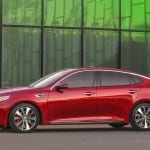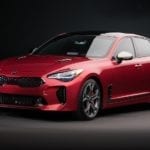Nearly everyone has their own opinion on a foreign import. Love them or hate them, brands like Toyota and Honda have their fierce critics and supporters alike. Some people won’t even consider anything that doesn’t have a Ford or Chevy logo somewhere on the body. Regardless of the actual build quality and reliability of the vehicle, people swear or praise their beloved brand.
This has been the challenge Kia Motors has faced over the past several decades as it has branched out from a small South Korean company to a global brand. Making its way into new overseas markets such as Europe and North America, the company has gone up against larger foreign and domestic rivals alike. Through this hardship, they have developed a rather unique identity and take on automotive manufacturing. They aren’t necessarily changing the way things are done with manufacturing and design, but their vehicles do make a statement.
If you have never gotten to know the Kia brand and its model lineup, now is the time. Going into the 2018 model year, Kia promises more surprises to attract new and existing customers into the fold of their global empire.
A Little Bit of History
How does a large car manufacturer start off as a company? The origin story of automotive companies are as diverse as the vehicles they sell. In the case of Kia Motors, this start was less than stellar.
They made bicycle parts.
Yes, back in the mid-1940s, Kia was a foreign supplier of steel tubes and parts that offered a cheaper, quicker turnover to reduce the price of the product. While it may seem somewhat of a jump for a company to go from bikes to cars, the progression actually makes sense. It’s beginning roots gave the company the experience it needed to understand the challenges of the manufacturing process.
It wasn’t until the 70s and 80s that Kia really got into the automotive industry. Before then, the company dipped their toes with motorcycles, trucks, and automotive parts for other companies. Eventually, the company started to form their own line of models and began to expand their presence in foreign markets.
What started as four small dealerships in Portland, Oregon in 1992, the company slowly grew into different regions across the United States. Today, Kia’s presence in the North American market is felt across the automotive industry. They have never enjoyed major success like Ford, Chevy, or Toyota, but they have developed a loyal following of customers who appreciate Kia’s consistent innovation and design style.
Kia’s Automotive Design
When you look at a modern Kia, you can immediately see the design style it embraces. Their sedans have a sleek, almost sporty feel that promises more performance than it can offer. The compact and SUV lines feature boxy bodies like the Soul and Rio. The presence of a slew of hybrid drivetrains embodies the company’s forward-looking approach to automotive design.
It’s hard to pin down specific features that define the Kia design style. They lack any iconic lookers like a Mustang or Porsche, so you might not immediately recognize one of their vehicles driving past you at high speeds. On the other hand, this has never been Kia’s primary purpose with their lineup. While all manufacturers try to make their vehicles distinct, some make it more of a mission than others.
In the case of Kia, the true mark of their design is found throughout the little details that go into their vehicles. From the distinct-yet-small tiger grille to the advanced systems that make their cars more automated and safe, Kia has embraced a “more than the sum of its parts” design philosophy to make their vehicles stand out.
The best way to think about Kia’s style is encompassed in their little-known slogan: the power to surprise. If their designers can find even one small way to make you raise an eyebrow, they have done their job.
The Kia Lineup
The modern Kia lineup is filled with different vehicle categories ranging from fuel-efficient compact cars and sedans to larger SUVs. The only major thing lacking is any presence of mid to full-sized trucks. In some ways, this is a strategic choice. The truck market is divisive enough. Loyalties run high towards Ford, Chevy, Honda, Toyota, and others. Why compete with the big dogs when you can make your own stamp somewhere else?
Notable models from the lineup include the Optima, Soul, and Sorento which all represent the diversity of the line. On one hand, the Optima is a somewhat traditional four-door sedan with modern upgrades and options. The Soul sports Kia’s “driving box” look while somehow managing a decent 28 combined MPG. Meanwhile, the Sorento offers expansive views, off-roading capabilities, and a roomy, three-row interior.
Looking at Kia’s lineup page, one thing you will eventually recognize is an upper skew of fuel economies. While other brands stick with high 10s and low 20s, Kia has pushed the envelope with a mix of fuel-efficient engines and electric drivetrains. Many of the most popular models come with traditional and/or plug-in versions that can achieve ranges of around 42 MPG or 103 MPGe for their smaller vehicles.
To see how outlandish Kia can really get, take a glance at their concept cars. When free of economic and manufacturing constraints, their affinity for surprising design really comes alive. From the reverse swinging rear doors on their GT to their open-air Soul’ster SUV, these cars still retain a sense of practicality while edging towards the limits.
Appreciating the Kia Style
It might not be as well known as a Ford, but Kia has created a space for itself in the automotive industry that shouldn’t be underestimated. In fact, recent years have rewarded Kia’s efforts with global recognitions such as ranking 69th in the world for the “Best Global Brands” list of 2017. In 2016, the company also won the award for the most reliable vehicles in the US.
These gains are small compared to the large trophy cases you will find at Ford HQ, but it demonstrates that Kia is doing something right. You can trust Kia will keep making these small gains until they are on equal footing with their larger rivals.




